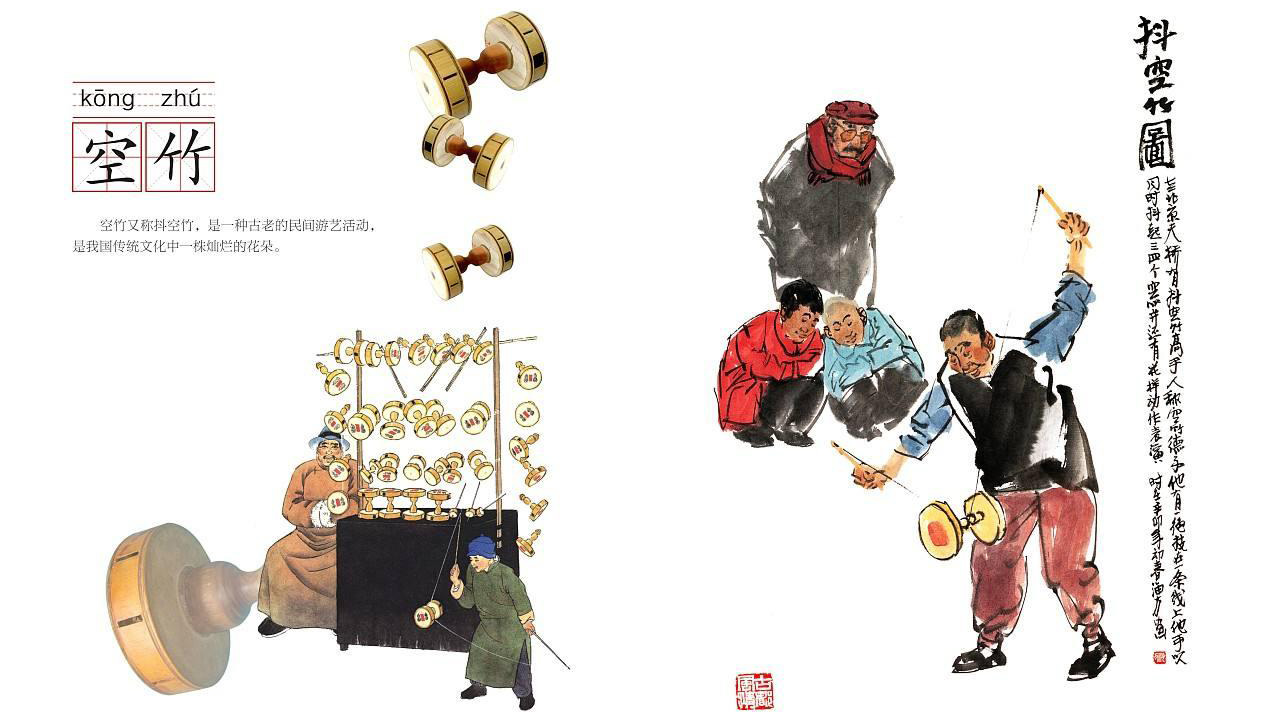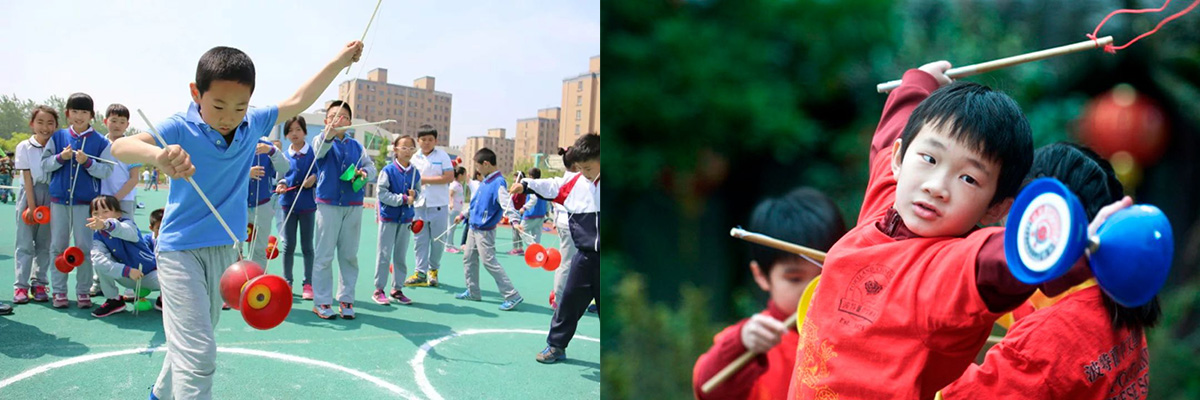The Chinese yo-yo, also known as the diabolo, is a traditional Chinese juggling and circus prop that has been entertaining people for centuries. It consists of an hourglass-shaped spool with an axle, often made of wood or plastic, and two sticks connected by a string. The player holds the sticks and manipulates the string to perform various tricks and stunts with the diabolo.

Here are the key components and aspects of the Chinese yo-yo:
Spool (Diabolo): The main body of the Chinese yo-yo is the spool, or diabolo. It is typically made of wood, plastic, or other durable materials. The spool has an hourglass shape with a wide middle section and pointed ends.
String: The diabolo is connected to two handsticks by a string. The player uses the handsticks to manipulate the diabolo's movement and perform tricks. The string is usually made of nylon or other strong materials.
Handsticks: These are the sticks held by the player. They often have handles for grip and strings attached to the ends. The player uses the handsticks to launch, catch, and control the diabolo.
Tricks: Chinese yo-yo tricks vary in complexity and skill level. Beginners start with basic tricks like spinning, tossing, and catching. As players advance, they can learn more intricate tricks involving tosses, catches, and even multiple diabolos in play simultaneously.
Styles: Different styles of diabolo play have emerged, including traditional Chinese routines, modern freestyle performances, and competitive routines. Skilled diabolo performers often incorporate dance, acrobatics, and other elements into their routines.
Competitions: Diabolo competitions have gained popularity globally, with participants showcasing their creativity and technical skills. Competitors are judged on factors such as difficulty, originality, and presentation.

The Chinese yo-yo, or diabolo, continues to captivate audiences worldwide with its graceful and dynamic performances, making it a beloved and enduring part of Chinese cultural entertainment.










